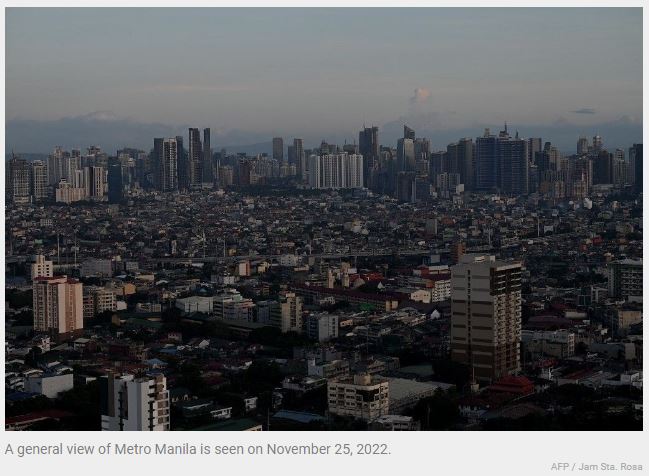World Bank sees faster 2022 GDP growth for Philippines before slowdown
MANILA, Philippines — The World Bank upgraded its forecast on the domestic economy’s growth in 2022 but expects some slowdown next year as persisting headwinds continue to loom overhead.
In the yearend edition of its Philippine economic update, the Washington-based lender said it now expects the economy to expand 7.2% year-on-year in 2022, from its old projection of 6.5% growth. The new forecast landed near the upper-range of the Marcos Jr. administration’s growth target of 6.5-7.5% for the year.
The Philippine economy managed to eke out a 7.6% annual growth in the third quarter. The economy was kept afloat by consumer spending in the first three quarters, which was unfazed by rising inflation.
The World Bank likewise projected that the domestic economy would grow 5.7% annually from 2023-2025. This was lower than the revised 6-7% goal set by economic managers.
“The unfavorable external environment and its spillover to the domestic economy will likely slow the growth momentum in the fourth quarter and into 2023,” the World Bank said.
According to the multilateral lender, the projected slowdown in 2023 is hinged on the forecast that pent-up consumer demand would eventually fade. High inflation, and the Bangko Sentral ng Pilipinas’ corresponding interest rate hikes to tame it, will temper consumer appetite.
Central banks, like the BSP, inject interest rate hikes to manage consumer inflation. In theory, this would slow down consumption since borrowing costs would force businesses and consumers to think twice about taking on debt.
“The higher rates will lead to lower private credit and subdued investments at a critical time when public investment growth is expected to slow in line with fiscal consolidation and a programmed decline of public infrastructure spending,” the World Bank said.
“The fear is that moderate shocks can tilt the global economy into recession, which will have dire consequences to the growth recovery in many EMDEs including the Philippines,” it added.
Despite this, the multilateral lender sees the logic in tightening monetary policy to keep inflation expectations within range. The Bank explained that low-income families are on the receiving end when consumer prices start increasing. If wages are unable to keep pace with inflation, this proves to be a problem.
“Monetary tightening is appropriate to prevent self-fulfilling expectation of rising inflation,” it added.
Food security?
In the latest iteration of this economic update, the World Bank noted that the Marcos Jr. administration needed to ramp up spending in agriculture. President Ferdinand Marcos Jr. remains the head of the Department of Agriculture, which has yet to see a real expert taking on the helm since the start of the new administration.
The World Bank’s growth prospect in the sector remains “poor” due to a mix of “chronic underinvestment and intense vulnerability to weather-related shocks”. The agriculture sector historically accounts for 10% of the country’s GDP.
“To this end, the efficient use of public funds for public investments will help address the structural constraints of the sector, and deliver better extension services, stronger,” the World Bank added.
Source: https://www.philstar.com/business/2022/12/06/2228974/world-bank-sees-faster-2022-gdp-growth-philippines-slowdown


 Thailand
Thailand




